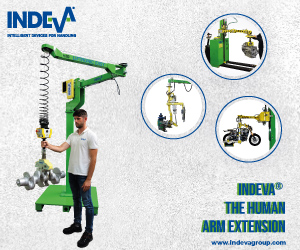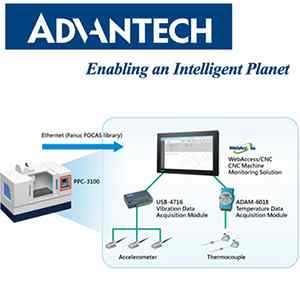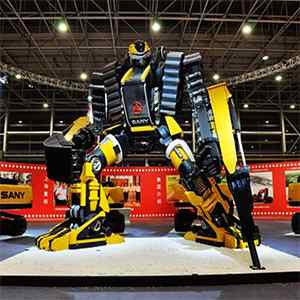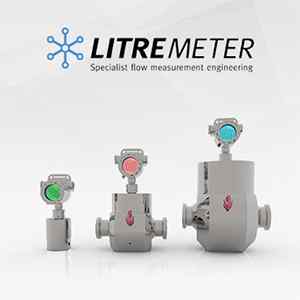Articles
Drones for Industrial Applications
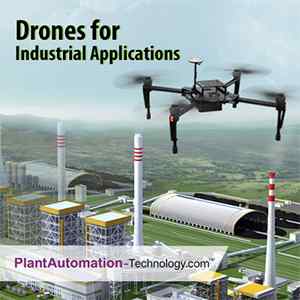
Drones, officially termed as Unmanned Aerial Vehicles (UAV), are pilotless aircrafts whose basic utility is to gather information on an environment and relay it back to its controller. When used in an industrial backdrop, drones can form a core part of industrial automation along with IoT devices. Industrial drones or UAVs are considered as the next breakaway in the ongoing Industry 4.0 revolution.
Introduction
The novelty of an industrial drone – or UAV or Unmanned Aircraft System (UAS) or Remotely Piloted Aircraft (RPA) – is to monitor regions or terrains inside or outside a manufacturing plant which generally cannot be inspected by human workers, either due to their hazardous setting or inaccessibility due to size or environment. Factories, refineries, power grids, wastewater treatment, mines, and other similar industrial sites are complex ecosystems requiring inspection and maintenance for optimal operation and regulatory compliance. On site inspection by human workers can be time consuming and in explosive environments, next to impossible unless some complex computer systems are used.
As an example, power grids have millions of miles of cables and systems that require monitoring. Using human workers has proven time and again to be an inefficient approach. Consider another example of the intricate pipe connections in refineries that requires heavy leak-detection inspection of pipes, interconnects, flanges and systems across.
Industrial drones can operate under complex circumstances such as these and enter even the most challenging terrains and environments, and carry out the operation it was designed for without so much as a scratch. From this it is clear that UAVs are the next generation in low-cost industrial sensors and mobile platforms in the interconnected web of Internet of Things. And they are evolving past just civilian, commercial or military use.
Examples of drones for industrial application are the Draganfly X6 & Airobotics UAV, which are being used by industrial sectors and security forces alike. Drones aren’t just flying cameras.
The article will explain how UAVs are being used and integrated into industrial applications instead of talking about the applications themselves.
1. How Drones Connect to the Industry
2. How Industries Use UAVs
3. How Industries like Energy & Utilities Use Drones for Industrial Applications
How Drones Connect to the Industry
A commercial or military drone has an end-to-end connection via wireless, from user to controller. An industrial UAV, however, much like any other device in the IoT web, communicates directly to an industrial control system such as the Supervisory Control and Data Acquisition or SCADA. Some of the parameters measured by the mounted IoT sensors are temperature, humidity, atmospheric pressure, motion, electric & magnetic field strength, coronal arc discharge, cell phone signals, and methane levels.
These sensors communicate directly with the utility’s core communication network. This level of integration requires bidirectional communication transmission security and logical protocol synchronization. UAS’ can do aerial imagery, visual imagery, thermal imagery and even radio-frequency imagery of factory stations and substations. However, drone imagery and drone airspace regulations vary from nation to nation and generally face severe restrictions as most processor-powered systems can be hacked into.
How Industries like Energy & Utilities Use Drones for Industrial Applications
Using the measurements gathered by IoT sensors as a novelty is of great significance to the success of the factory. Widespread adoption and integration across major automation markets, such as mining, energy & utilities, agriculture, oil & gas, infrastructure, emergency response, and life sciences calls for intelligent solutions that combine UAV hardware and automation software to deliver tangible results at scale.
This has prompted the automation industry and drone manufacturers to look for a disruptive technology that will liberate the UAV: namely, high-speed data analytics combined with Industrial IoT, cybersecurity, and sensor-mounted drones. In order to use this integration in UAV applications, the standards & guidelines which can incorporate advanced technologies into procedures and practices need to set up.
Engineers and scientists are already working on drones of varying capabilities which, much like military drones, would be operated from a ground station. The station will gather real-time measurements and sensor data from other fixed and mobile platforms. The data, however, will be monitored and recorded within SCADA or SCADA-like system similar to current UAS’.
Flight Mechanics & Control of Drones for Industrial Applications
Industrial drones, commercial drones, and military drones operate at different speeds and heights, and have different performance characteristics and flight profiles. It is thus necessary to consider the environment while designing a drone for a factory setting. Due to the unit generally being a smaller, much enclosed space, the flight operation of a RPA is generally designed for a more limited fuel-supply. To this end, a weight versus power versus flight time can be drawn to reveal the empirical data related to battery life and range required for operation.
The overall weight of the sensor-laden drones determines battery life. The more the weight, the more the power consumed by the sensors. It also heavily depends on the number of functional sensors. A standard consumer drone can operate for 20 minutes. However, industrial drones can operate anywhere from 20 minutes to several hours. Military drones are a different case as they might be propelled using chemical propulsion. In order to improve flight characteristics, especially flight time and range, engineers look to increase the energy density of the battery.
Control plays a major role in the success of drone operations. The latest innovation in the mode of control is the Beyond-Visual-Line-Of-Sight (BVLOS) operation, which is a system that enables controlling the flight beyond the pilot’s visual line. Although most nations do not permit the use of BVLOS in industrial settings, attempts are being made to prove the safety and efficiency of BVLOS for UAVs. This is being done because VLOS inspections have their obvious limitations.
For example, BVLOS will let power grid personnel monitor cable lines over longer corridor stretches. And this operates to other critical infrastructure. However, it will not be before 2018 that the approval for BVLOS in such applications will be given. Organizations such as the Federal Aviation Administration or FAA (USA) and Director General of Civil Aviation or DGCA (India) lay the guidelines, restrictions and protocols for owning and operating UAVs.
Conclusion
Innovations in RPA control systems & flight dynamics in an automation setting are leading to the use of inexpensive, lightweight materials for microcontrollers. And networked wireless communications (IoT) are creating unique drones that can coordinate and fly in large formations and flocks to tackle an industrial situation (even calamities) efficiently. Some of the situations include a mining or oil extraction plant.
Methane sensing, fracking sites, bridge inspection, power generation facilities in coal-fired plants are other examples of UAV applications. This level of connected IIoT environment achieved using a variety of sensors in one drone that communicate with the sensors of other drones. DraganFly, Intel and Airobotics are some of the companies which have been supplying drones for industrial applications for several years.
UAVs form an essential component of our Industrial IoT network, our defense & security, and our commercial spaces, and might soon take over much of human activities. It is also an essential component in the realization of Industry 4.0.

